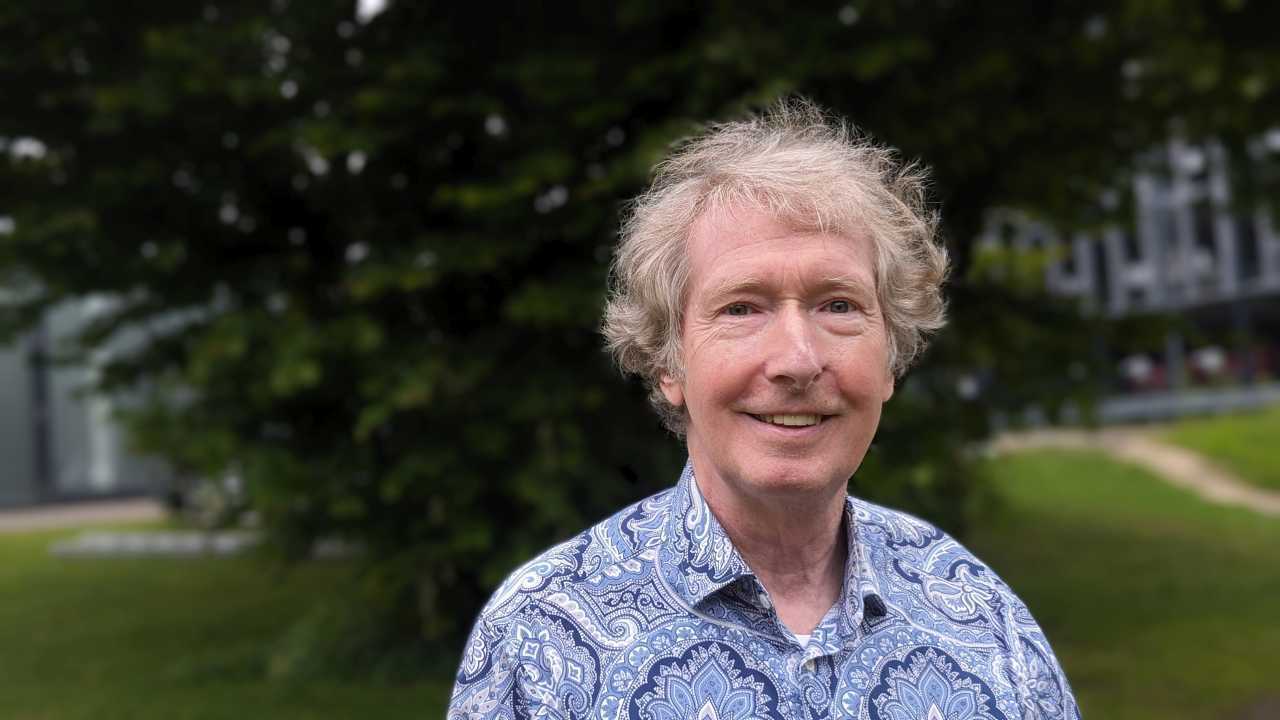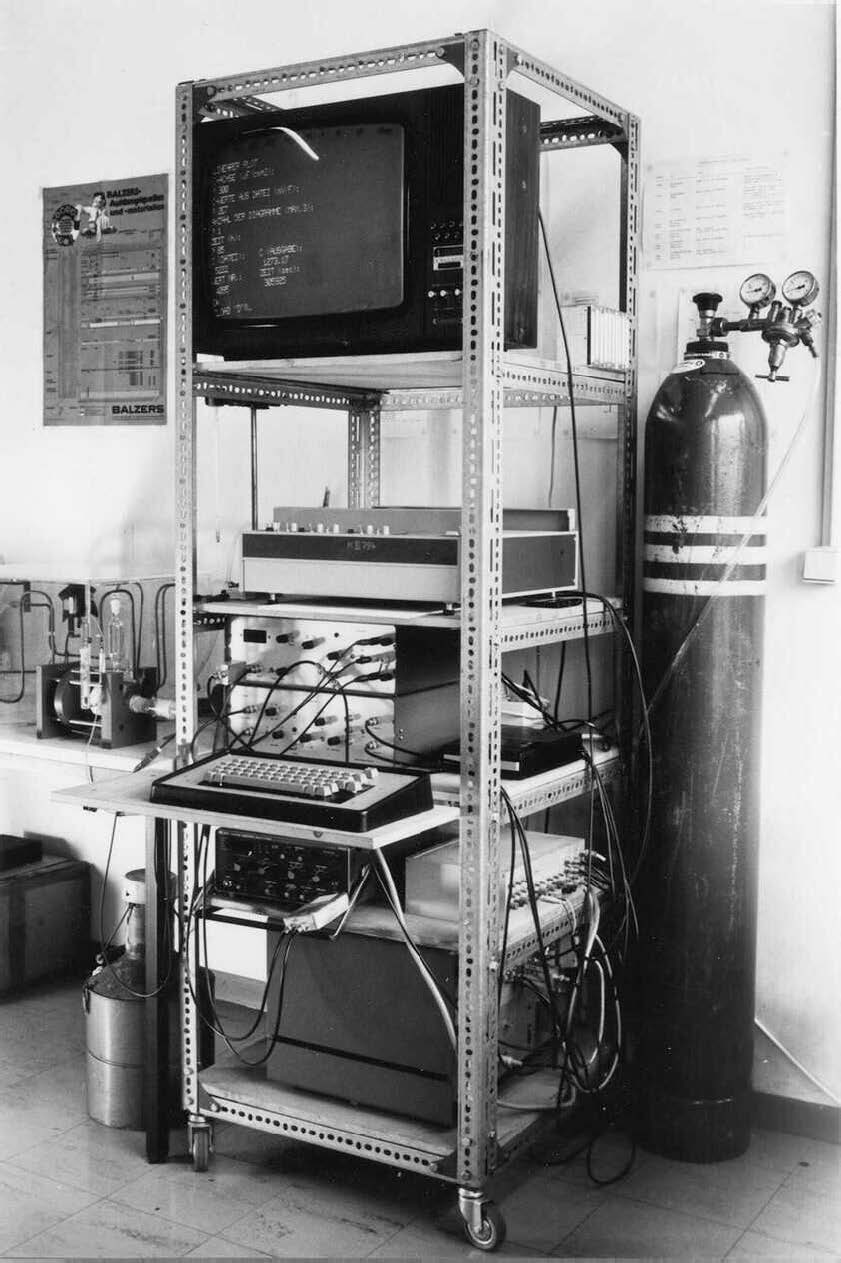Electro Beats und Electrochemistry

For Professor Rainer Waser, the human brain is the key to creting energy-saving supercomputers. And interdisciplinarity is essential for just about everything.
“Definitely not,” says Professor Rainer Waser with a laugh. He doesn't want to be called RWTH’s Leonardo – being compared to the Renaissance polymath is a bit too much. Yet, Professor Waser is undeniably a researcher with many facets and an impressively wide range of interests. He firmly believes that real progress can only be achieved through interdisciplinary research and collaboration.
At the recent International Conference of Neuromorphic Computing and Engineering (ICNCE), which Professor Waser was in charge of organizing, his colleague Daniele Ielmini praised him in a speech. “Rainer likes electro beats just as much as electrochemistry,” he said with a grin. It’s well-known that Rainer Waser enjoys electronic music, but it’s quite striking that just before his 60th birthday, he and his wife Caroline joined 180,000 other fans at the legendary Tomorrowland festival in Belgium to immerse themselves in the electronic music scene.
The professor was so thrilled by the festival that he decided to celebrate his birthday in two parts: first, a symposium with lectures and discussions, and then a costume party inspired by the fantastical world of Tomorrowland. His musical tastes are far from limited to electronic beats. His playlist spans medieval dance music, folk, pop, metal, punk, techno, and psytrance – he even has a Helene Fischer song on there.
The Tomorrowland story perfectly captures Rainer Waser’s passion for his interests and his enthusiasm for interdisciplinary exploration. As the head of RWTH’s Institute for Materials in Electrical Engineering II, Waser easily moves between different fields: He is a physicist, chemist, and electrical engineer, but he is also well-versed in philosophy and sociology.
“Not just immersing myself in one discipline, but building bridges – that’s what has driven me my whole life.” Even as a child, he was captivated by a wide range of subjects. Growing up in Heusenstamm, Hesse, he set up a chemistry lab in his bedroom. After an ‘incident with flying sparks and a scorched curtain,’ which he recalls with a grin, he promised his parents he wouldn’t experiment at home again until he was a student.
An electronic measuring station built by Waser to explore electrochemistry in more depth, using his grandmother's old black-and-white TV as the monitor.

Before he even began his formal education, Waser attended lectures on quantum mechanics, philosophy, and the sociology of music – “simply because it interested me.” In 1974, at the age of 19, he enrolled in chemistry at Darmstadt University of Technology and set up a laboratory in his parents’ basement. On the side, he dabbled in electronics, built amplifiers, and “tinkered with all kinds of stuff,” even constructing a nuclear quadrupole resonance spectrometer for his final thesis.
Upon returning from a study abroad year in Southampton in 1980, he set up an automated, computer- controlled measuring station to explore electrochemistry, using his grandmother’s old black-and-white TV as a screen. He acquired the necessary know-how from textbooks, specialist journals, and construction manuals.
Furthermore, Waser’s interdisciplinary curiosity led him to publish a paper at the intersection of philosophy and music sociology for a youth competition hosted by Philips: “The Structure of a Sociology of Music Based on the Axioms of Dialectical Materialism” – an unconventional project for a chemistry student.
Naturally, Waser organized a panel discussion on interdisciplinarity at the ICNCE in early June at the Eurogress in Aachen. This marked the fourth major conference he has organized there, following events in 1994, 2000, and 2012. His aim was to bring together various research communities: his own group, which focuses on neural materials, components, and systems; neuroscientists; and computer scientists specializing in AI.
The idea of examining neighboring disciplines was a resounding success, largely because all speakers were required to present at an “after dinner speech” level, ensuring that everyone – not just experts – could understand. Looking ahead, the plan is to hold a follow-up conference in two years. However, Rainer Waser will no longer be at the helm by then; the 68-year-old is set to retire at the end of July.
He cherishes his time at RWTH and shares some crucial advice for students and instructors: “Be curious and have fun, or it’s not worth it.” For him, another key element has been personal freedom. “It was always important to me to be free in what I do. That’s why I became a professor instead of going into industry.” For example, was his very own decision to focus on memristive devices in particular over the last two decades.
The concept behind his research is to develop components that mimic the human brain. Waser took a 1960s idea and pushed it further: The finding that “ions can migrate under high fields” was a pivotal discovery. His dual expertise as a physicist and a chemist made this breakthrough possible. “This is a bit like a synapse in the biological nervous system,” he explains, drawing a parallel between his work and the brain's structure.
The fundamental goal of Waser’s research is to replicate the brain’s neural networks using memristive devices. Given that the brain is far more energy-efficient than any supercomputer – the brain uses 20 to 25 watts, whereas a supercomputer simulating a small part of the brain needs about two megawatts – the aim is to advance neuromorphic computing with memristive elements.
In conventional computers, information constantly shuttles between memory and the processor. In contrast, “computing in memory” could be the first step towards achieving functionality akin to the human brain. This foundational technology, focusing on materials, device simulation, measurement technology, and integrated circuits, is being researched in the NEUROTEC project by an interdisciplinary team from Forschungszentrum Jülich, RWTH, and AMO GmbH. His colleague Max Lemme’s NeuroSys research cluster, funded by the Federal Ministry of Education and Research’s Clusters4Future initiative, takes this further by delving into systems, ethics, and AI.
Multiple Awards
Rainer Waser has received numerous awards, including the prestigious Leibniz Prize in 2014, specifically for his interdisciplinary research. Appointed as a university professor at RWTH in 1992, Waser became director of the Peter Grünberg Institute at Forschungszentrum Jülich five years later. He continues to champion interdisciplinary approaches, supporting the establishment of the Jülich Neuromorphic Computing Alliance as a cross-institute consortium. His guiding principle is: understand others to achieve real progress together. “The Jülich Aachen Research Alliance, a joint venture between RWTH and Forschungszentrum Jülich, was and is very close to my heart,” says Waser.
Rainer Waser is married to British editor and English instructor Caroline Zurhelle-Waser. They met when she was editing his book “Nanoelectronics and Information Technology.” Their blended family includes four children from previous relationships, two of their own, and four grandchildren.
The next phase of his life promises to be anything but boring – not just because of his large family. The Wasers love traveling, especially to Italy, and his wife is even learning the language. Cycling tours are also on the agenda, with an upcoming trip from Lake Garda to Venice with his wife and friends. But for now, it’s off to the CHIO – the largest equestrian event in Germany – which his wife, an avid rider, eagerly anticipates.
Rainer Waser also plans to continue sharing his knowledge through lectures at the intersection of AI, his key research interests, and philosophy, always maintaining his interdisciplinary approach.
He even envisions giving a talk specifically about interdisciplinarity.
Drawing from a lifetime of research, Professor Rainer Waser has become a modern-day polymath. Beyond science, he’s a design enthusiast with an interest architecture, garden design, and he even tried his hand at painting. Yet, despite his broad expertise and accomplishments, he still shies away from being called a “Leonardo.”
